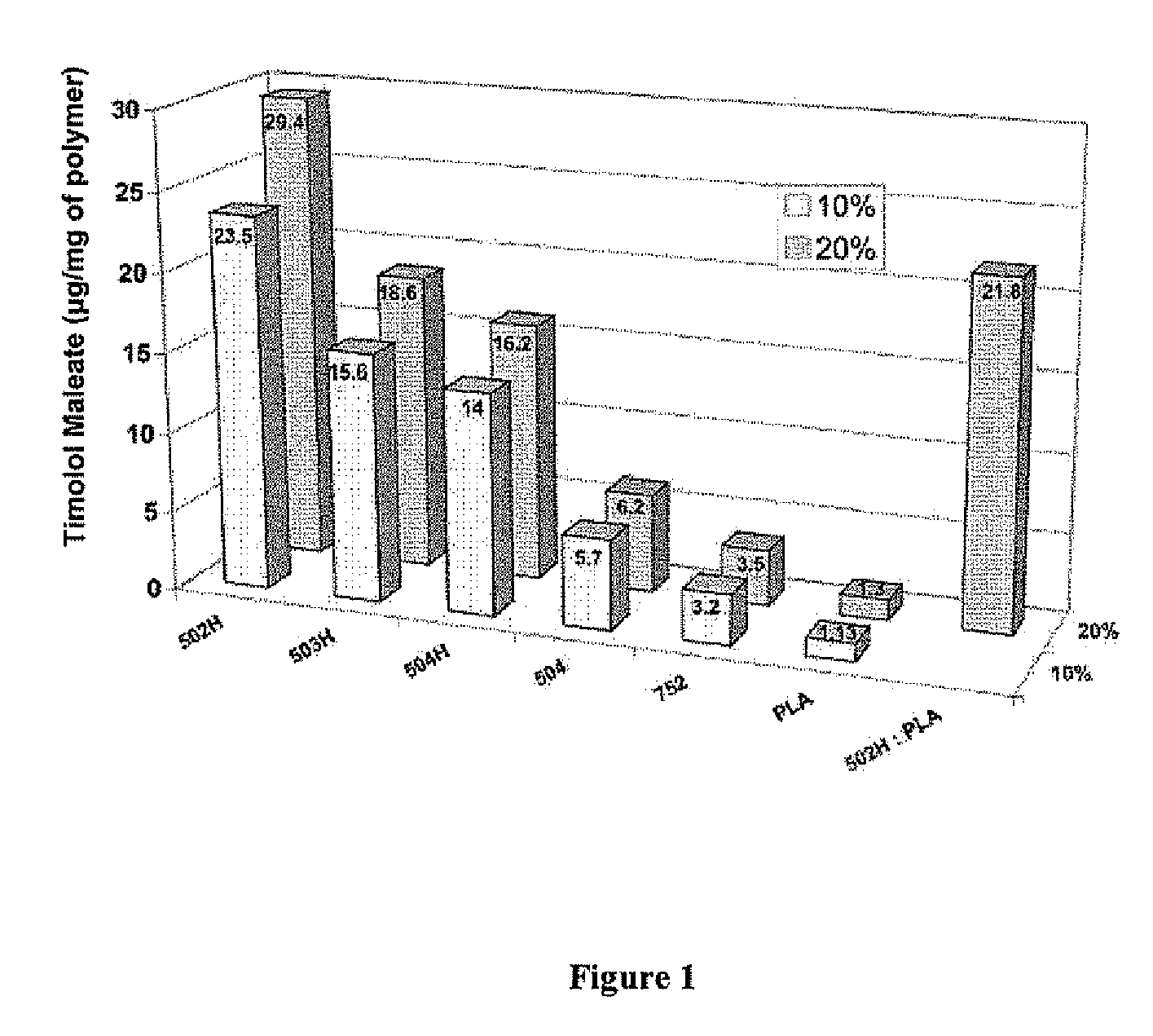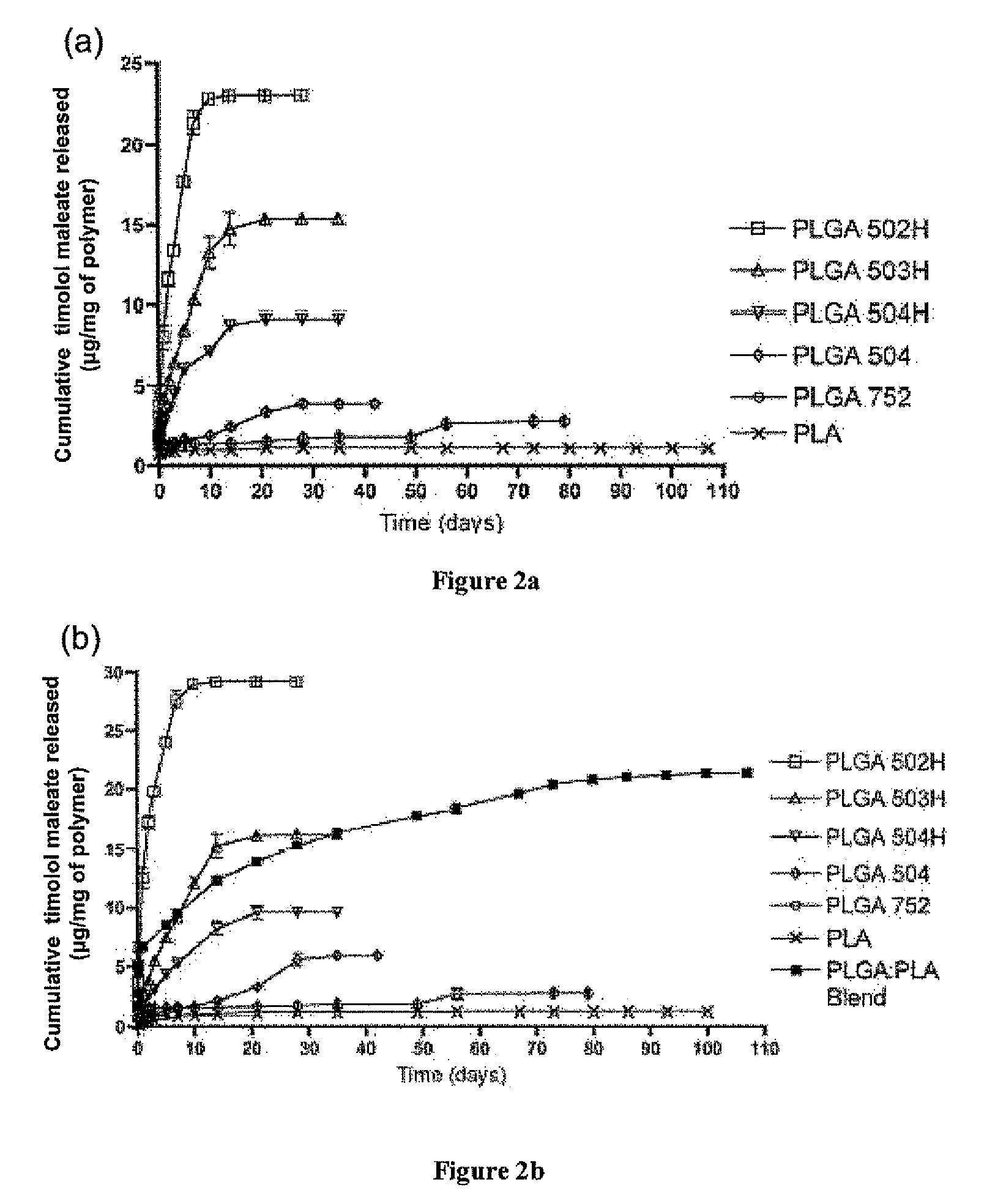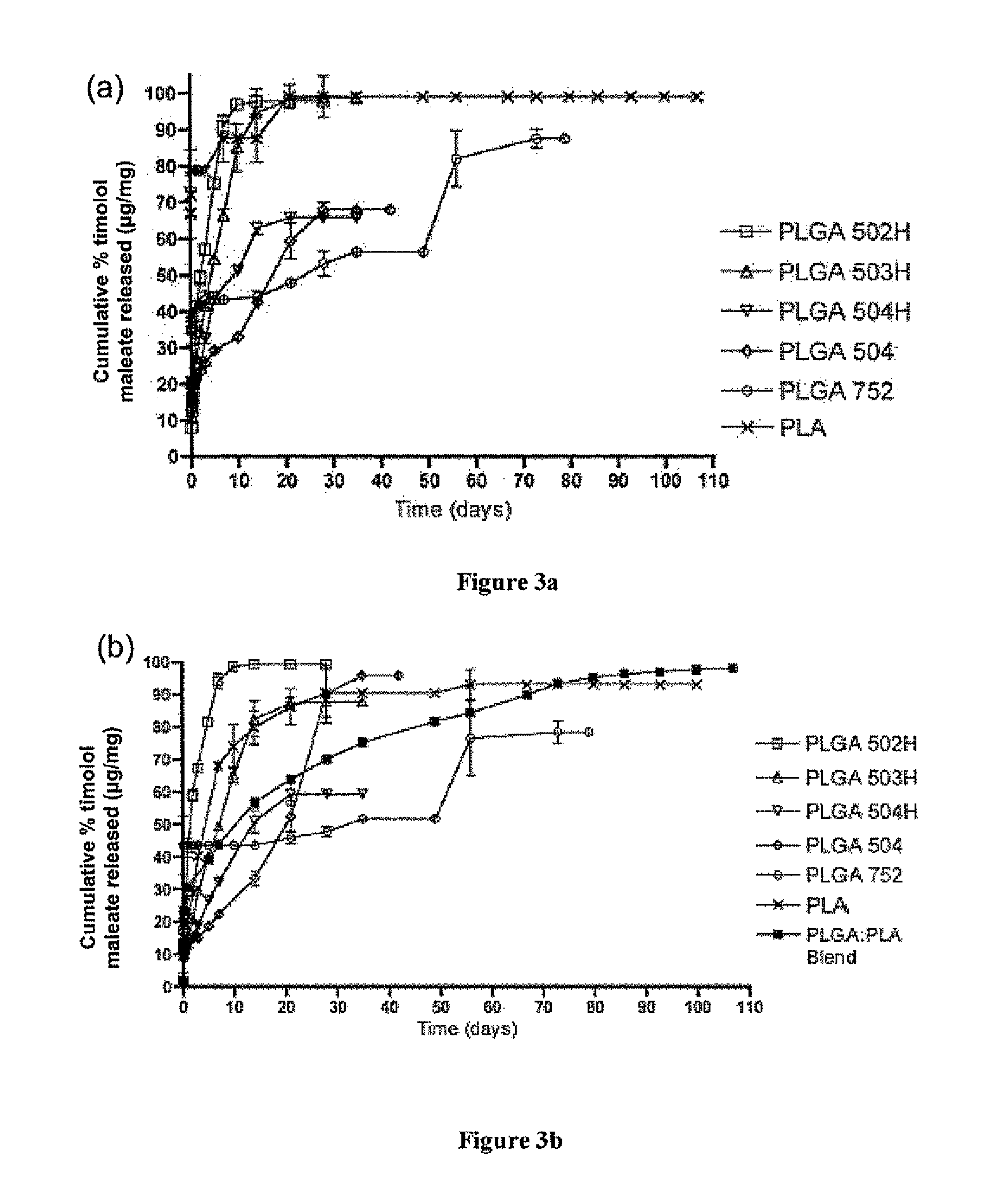Sustained intraocular delivery of drugs from biodegradable polymeric microparticles
a biodegradable, micro-particle technology, applied in the direction of ester active ingredients, peptides, medical preparations, etc., can solve the problems of poor compliance with this treatment regime, gradual vision loss and ultimately blindness, and more than half of patients are unable to maintain consistently, so as to reduce intraocular pressure and reduce intraocular pressure , the effect of reducing the adverse side effects
- Summary
- Abstract
- Description
- Claims
- Application Information
AI Technical Summary
Benefits of technology
Problems solved by technology
Method used
Image
Examples
example 1
Preparation of Microspheres
[0144]A water-in-oil-in-water (w / o / w) double emulsion solvent evaporation technique was used for microsphere fabrication. 20 or 40 mg of timolol maleate was dissolved in 300 μl of deionized water. 200 mg of polymer (or polymer blend, such as 50:50 blend of PLGA 502H and PLA) was dissolved in 1 ml of dichloromethane and 4 ml of trifluoroethanol. The aqueous and organic phases were emulsified via vortexing to obtain a desired drug polymer ratio of 10% or 20%. The emulsion was added dropwise to 200 ml of 5% (w / v) PVA aqueous solution and allowed to stir / harden for 3 hours. The microspheres were collected by centrifugation, washed three times with deionized water, and freeze dried for 3 days. Blank microspheres were made at the same time under identical conditions except that no timolol maleate was added.
[0145]Timolol Maleate Microsphere Loading
[0146]To determine the loading of timolol maleate, 5 mg of timolol maleate-containing microspheres or blank microsphe...
example 2
In Vivo Studies of Pharmacokinetics and IOP Response of Timolol Maleate-Loaded Microspheres
[0168]Lasered C57 / BL6 mice and DBA / 2J mice were used to investigate the effect of the in vivo release of timolol maleate on IOP and to quantify the concentration of timolol maleate in the aqueous humor over time. The lasered mouse model leads to elevated IOP for approximately 28 days following the lasering of the trabecular meshwork.
[0169]PLGA 502H / PLA timolol maleate-loaded microspheres were warmed to room temperature and resuspended in sterile PBS at a concentration of 25 mg / ml. The DBA / 2J mice were anesthetized with isofluorane. 25 μl of the timolol-loaded or blank microspheres were injected subconjunctivally into the superotemporal quadrant of the right eye using a 30 gauge needle and a Hamilton syringe.
[0170]The eyes were nucleated and the aqueous humor was collected using a 30 G butterfly needle, Timolol maleate was quantified using HPLC with an LC-18 column (INtersil ODS-3) at 294 nm. T...
example 3
Preparation and In Vitro Release Studies of Microspheres Containing Ofloxacin
[0172]Microspheres containing ofloxacin were prepared using the polymers described in Example 1. The microspheres were prepared using the phrase separation single emulsion solvent evaporation technique similar to the method described in Example 1. The in vitro release studies were conducted as described in Example 1.
[0173]Analysis using UV spectroscopy was done at 288 nm for ofloxacin. Concentration of dissolved ofloxacin was determined as a function of time from their respective standard curves. Plotting ofloxacin concentration versus UV absorbance produced a calibration curve for quantification of ofloxacin. A linear fit was established from ˜0.09-25 μg / mL of ofloxacin (Y=15.196x+0.0571; r2=0.9999) in phosphate buffered saline.
[0174]The in vitro release profile for ofloxacin is shown in FIG. 9. FIG. 9a shows the standard curve for ofloxacin and FIG. 9b shows the cumulative release profiles for ofloxacin-l...
PUM
| Property | Measurement | Unit |
|---|---|---|
| weight percent | aaaaa | aaaaa |
| weight percent | aaaaa | aaaaa |
| concentration | aaaaa | aaaaa |
Abstract
Description
Claims
Application Information
 Login to View More
Login to View More - R&D
- Intellectual Property
- Life Sciences
- Materials
- Tech Scout
- Unparalleled Data Quality
- Higher Quality Content
- 60% Fewer Hallucinations
Browse by: Latest US Patents, China's latest patents, Technical Efficacy Thesaurus, Application Domain, Technology Topic, Popular Technical Reports.
© 2025 PatSnap. All rights reserved.Legal|Privacy policy|Modern Slavery Act Transparency Statement|Sitemap|About US| Contact US: help@patsnap.com



